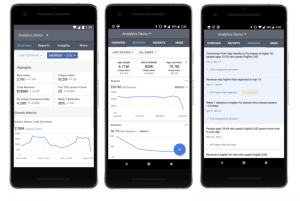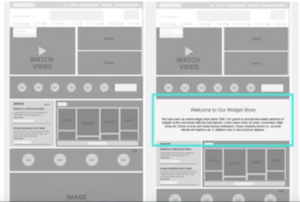What’s one overlooked strategy for improving customer surveys?
1. Gamifying Them
 One of the best ways to increase completion rates for customer surveys is to bring in elements of a game. Make it fast, fun and easy for them to respond, instead of asking them to slog through boring surveys that aren’t interactive. – Doreen Bloch, Poshly Inc.
One of the best ways to increase completion rates for customer surveys is to bring in elements of a game. Make it fast, fun and easy for them to respond, instead of asking them to slog through boring surveys that aren’t interactive. – Doreen Bloch, Poshly Inc.
2. Including Them in the Login Page
 We’ve put the survey on the login page, right when a customer signs in. It works like a charm. We get a 50 percent+ conversion rate. We keep it very short where it’s just as easy to rate the survey as it is to close the survey. Our customers know that we put this on them every four months and they are really great about it. Try it! – John Rampton, JohnRampton.com
We’ve put the survey on the login page, right when a customer signs in. It works like a charm. We get a 50 percent+ conversion rate. We keep it very short where it’s just as easy to rate the survey as it is to close the survey. Our customers know that we put this on them every four months and they are really great about it. Try it! – John Rampton, JohnRampton.com
3. Personalization
 If applicable, try to figure out how your customers are using your service and tailor the survey questions to them. Make the person feel like a VIP, that it isn’t a generic questionnaire and that you’re actually asking them for their expert opinion. – Adam Stillman, SparkReel
If applicable, try to figure out how your customers are using your service and tailor the survey questions to them. Make the person feel like a VIP, that it isn’t a generic questionnaire and that you’re actually asking them for their expert opinion. – Adam Stillman, SparkReel
4. Crowdsourcing Community Leaders
 Your brand’s online community leaders will be thrilled to have a voice in how your brand engages with customers, and they’ll have insights into customer pain points that you might not have. Crowdsource your customer survey questions from brand advocates and community leaders and you’ll also reap the benefits of community building with your most engaged 20 percent. –Dave Nevogt, Hubstaff.com
Your brand’s online community leaders will be thrilled to have a voice in how your brand engages with customers, and they’ll have insights into customer pain points that you might not have. Crowdsource your customer survey questions from brand advocates and community leaders and you’ll also reap the benefits of community building with your most engaged 20 percent. –Dave Nevogt, Hubstaff.com
5. Using Skip Logic
 Chances are, you don’t want to ask every customer the same question. By understanding how each respondent differs, you can customize questions to maximize the answers you receive. It’s better to get eight great answers from a customer than 20 so-so answers from someone who’s tired of taking your survey halfway through. Utilize skip-logic and other tools to personalize surveys and ensure relevance. – Brittany Hodak, ZinePak
Chances are, you don’t want to ask every customer the same question. By understanding how each respondent differs, you can customize questions to maximize the answers you receive. It’s better to get eight great answers from a customer than 20 so-so answers from someone who’s tired of taking your survey halfway through. Utilize skip-logic and other tools to personalize surveys and ensure relevance. – Brittany Hodak, ZinePak
6. Testing and Validating Your Questions Before Deploying Them
 After deploying a survey in full, you may encounter something startling — that people misinterpreted the question or gave answers that were totally off base. That’s why it’s important to test your questions beforehand. You can do this qualitatively by discussing questions with people in your sample or quantitatively by testing your survey on a small proportion of your sample. –Ritika Puri, Storyhackers
After deploying a survey in full, you may encounter something startling — that people misinterpreted the question or gave answers that were totally off base. That’s why it’s important to test your questions beforehand. You can do this qualitatively by discussing questions with people in your sample or quantitatively by testing your survey on a small proportion of your sample. –Ritika Puri, Storyhackers
7. Targeting and Shortening
 Most companies deploy surveys that are quite lengthy in order to learn about the customers who are answering the survey to correlate their answers with customer profiles and demographics. However, if you more closely target customers based upon what you already know about them and how they use your service, you can shorten the length necessary for your survey, increasing completion rates as well. – Robi Ganguly, Apptentive
Most companies deploy surveys that are quite lengthy in order to learn about the customers who are answering the survey to correlate their answers with customer profiles and demographics. However, if you more closely target customers based upon what you already know about them and how they use your service, you can shorten the length necessary for your survey, increasing completion rates as well. – Robi Ganguly, Apptentive
8. Contextual Questioning
 Ask questions that have a context within the customer‘s current goal. If you’re running a website and want to survey ease of website use, ask the questions on the order success page. If you want to know how much they expect to order in the next year, ask that question via an optional section on the order history page. You’ll find those one or two questions get answered more frequently. – Brian Fritton, Patch of Land
Ask questions that have a context within the customer‘s current goal. If you’re running a website and want to survey ease of website use, ask the questions on the order success page. If you want to know how much they expect to order in the next year, ask that question via an optional section on the order history page. You’ll find those one or two questions get answered more frequently. – Brian Fritton, Patch of Land
9. Giving Before You Get
 Relationships are give and take. A “give first” mentality can go a long way. Timing your surveys after you’ve provided value, through things like a webinar or white paper, will get a higher response rate. Small rewards also work well if you can maintain the incentive, as customers will get used to expecting something in return. Avoid large rewards, which typically cause unreliable results. – Jeff Rohr, SquareOffs
Relationships are give and take. A “give first” mentality can go a long way. Timing your surveys after you’ve provided value, through things like a webinar or white paper, will get a higher response rate. Small rewards also work well if you can maintain the incentive, as customers will get used to expecting something in return. Avoid large rewards, which typically cause unreliable results. – Jeff Rohr, SquareOffs
10. Mentioning How Previous Surveys Have Altered the Company’s Direction
 We have found that reminding users that they are actually the company’s greatest voice by showing how past surveys and/or feedback has really helped the company motivates folks to complete new ones. So, we make a point to highlight a specific feature/functionality driven by a particular user whenever we ask them to fill out another survey. – Kofi Kankam, Admit.me
We have found that reminding users that they are actually the company’s greatest voice by showing how past surveys and/or feedback has really helped the company motivates folks to complete new ones. So, we make a point to highlight a specific feature/functionality driven by a particular user whenever we ask them to fill out another survey. – Kofi Kankam, Admit.me
11. Actionable Questions
 Companies often send out surveys that ask too many broad questions and offer a rating scale of 1-10 . Can anyone tell me the difference between a six or seven out of 10? I didn’t think so. Ask questions that get you narrowed, actionable insights into what you can do better for your customers and whether or not your business is creating brand advocates or just customers. – Seth Talbott, CEO and Startup Advisor
Companies often send out surveys that ask too many broad questions and offer a rating scale of 1-10 . Can anyone tell me the difference between a six or seven out of 10? I didn’t think so. Ask questions that get you narrowed, actionable insights into what you can do better for your customers and whether or not your business is creating brand advocates or just customers. – Seth Talbott, CEO and Startup Advisor
12. A Comment Field
 I completed a survey recently that had far to many questions and only one comment field at the very end. By the time I answered the 50th question I was even more irritated than when I started. Only a handful will respond, mostly those that really like or really dislike something, so take advantage of this and get real comments to help you improve, while also keeping it short. – Josh Sprague, Orange Mud
I completed a survey recently that had far to many questions and only one comment field at the very end. By the time I answered the 50th question I was even more irritated than when I started. Only a handful will respond, mostly those that really like or really dislike something, so take advantage of this and get real comments to help you improve, while also keeping it short. – Josh Sprague, Orange Mud
(256)
Report Post





